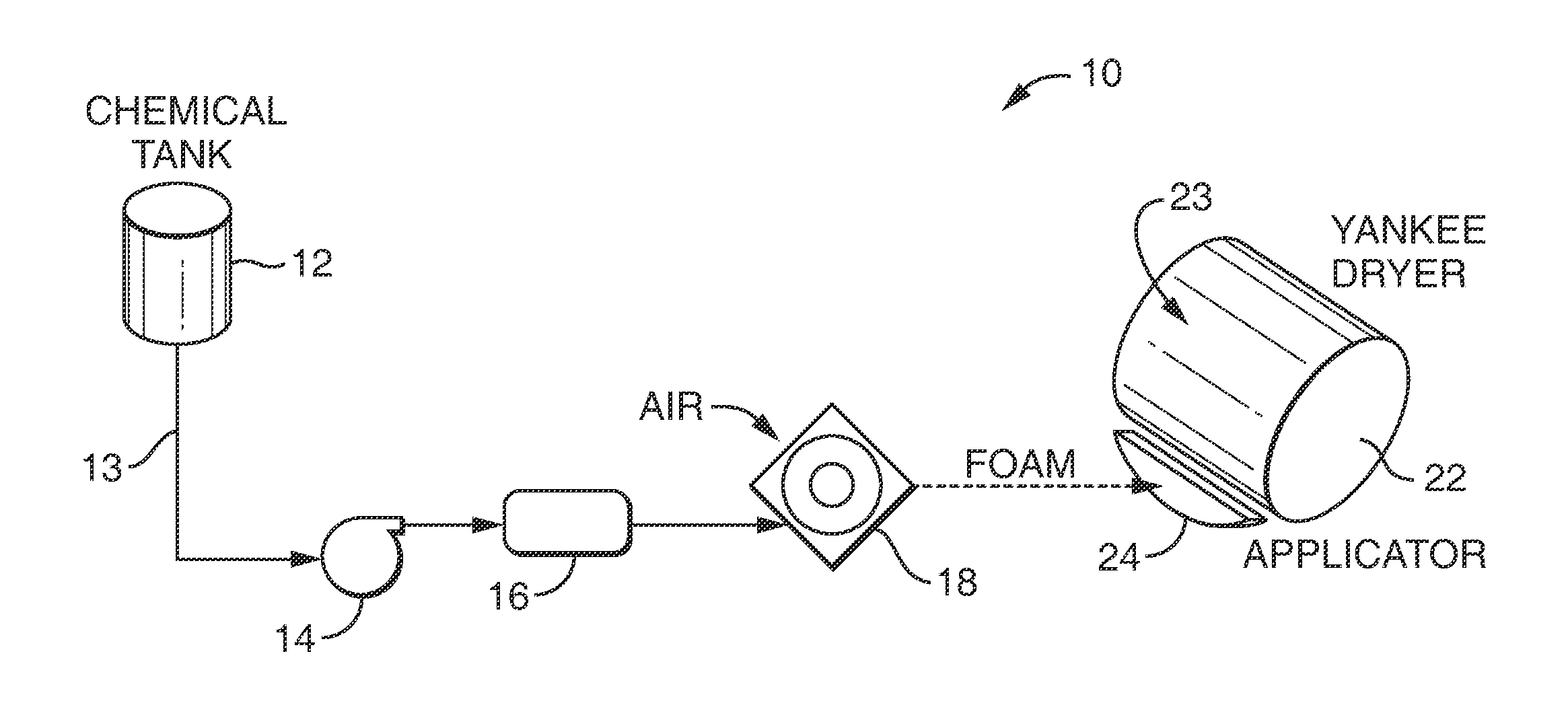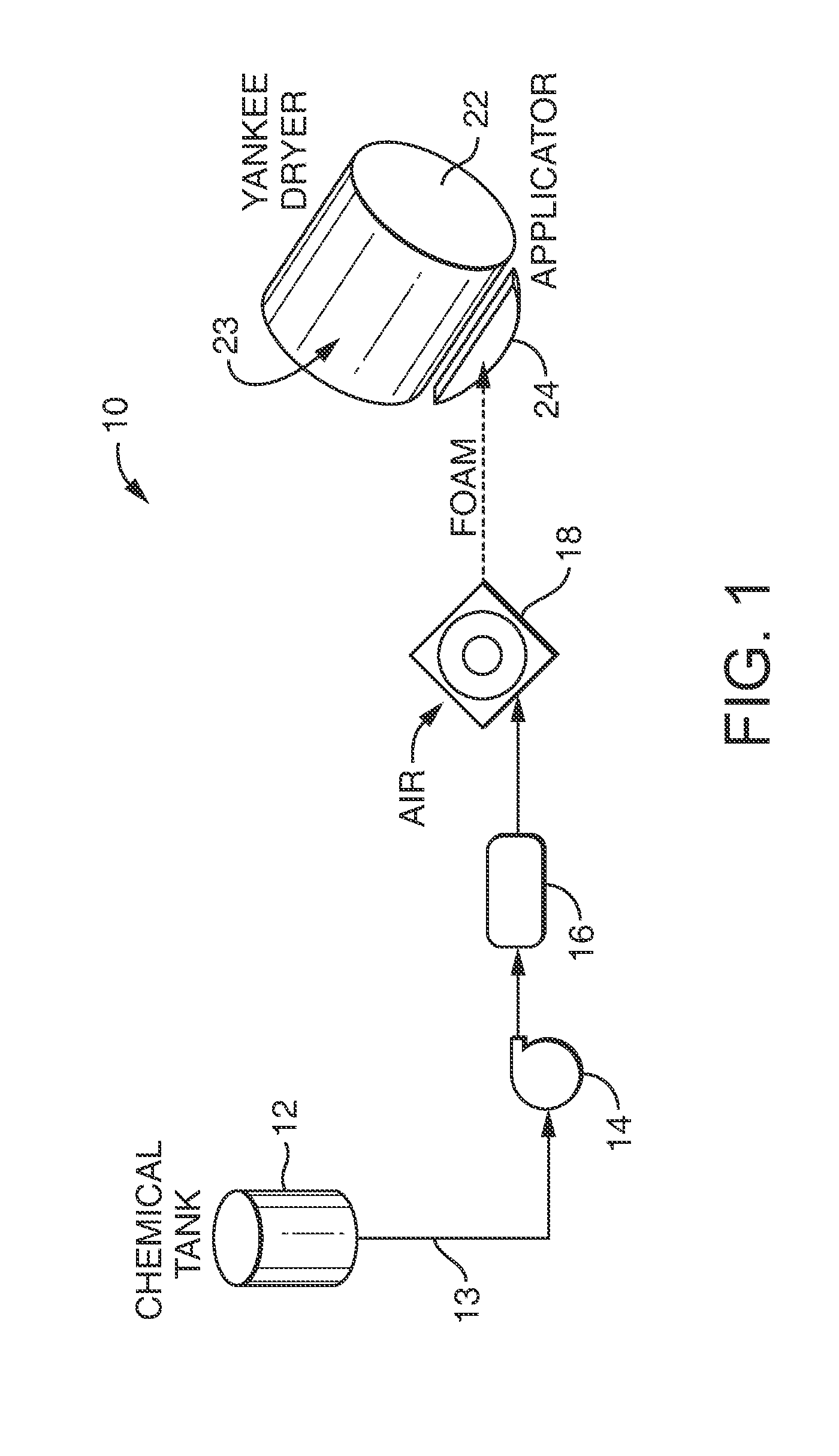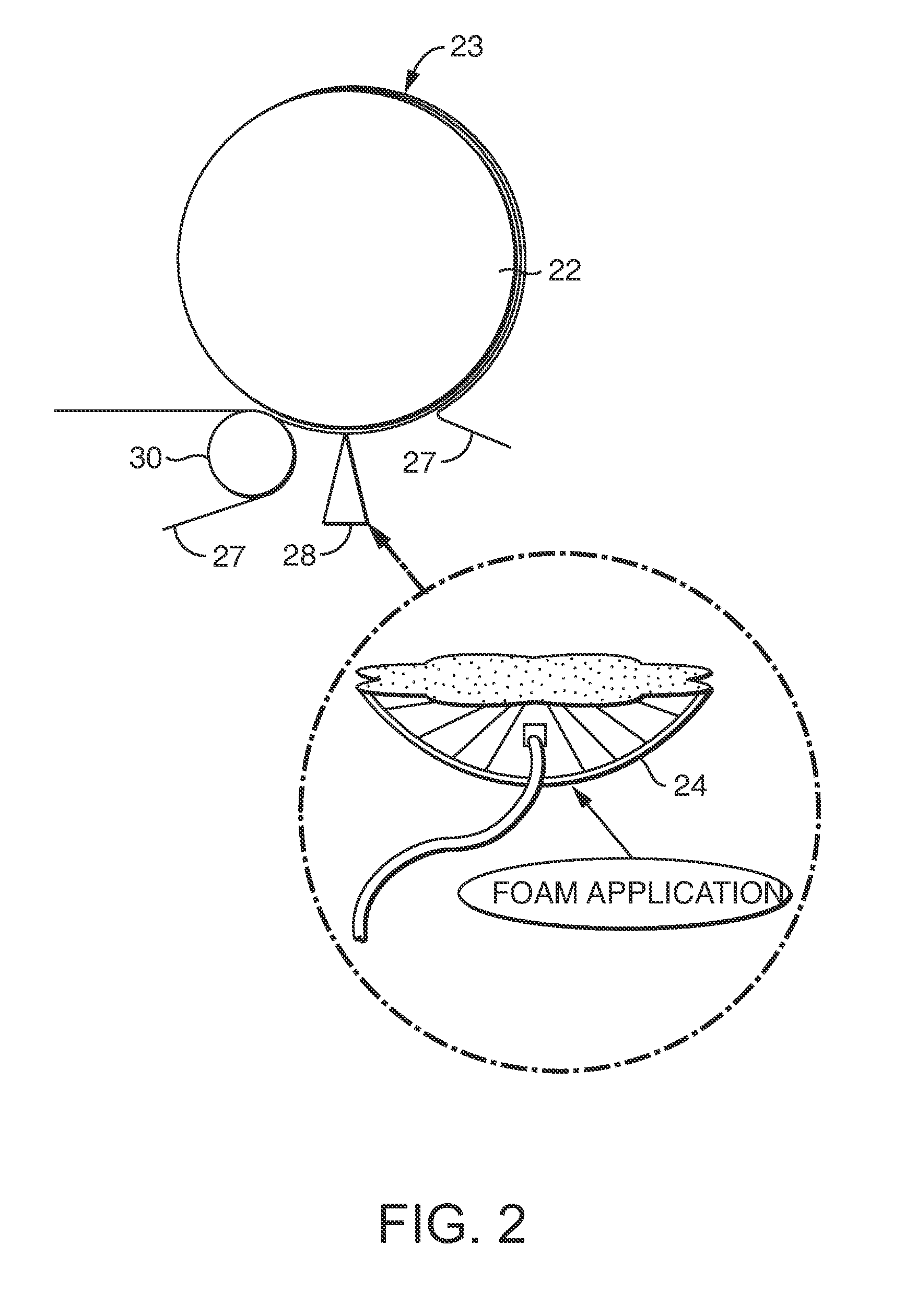Substrates comprising frothed benefit agents and the method of making the same
a non-woven substrate and benefit agent technology, applied in the direction of tissue/absorbent paper, non-fibrous pulp addition, sheet delivery, etc., can solve the problems of additive dispersion, low chemical mass efficiency of spraying process, and inability to modify any additive to include additional solid particles and short fibers that improve the overall softness of substrates, etc., to achieve less energy, improve chemical mass efficiency, and reduce waste in the application process
- Summary
- Abstract
- Description
- Claims
- Application Information
AI Technical Summary
Benefits of technology
Problems solved by technology
Method used
Image
Examples
example 1
[0115]In this example, three dry substrates were used: 54 gsm hydroentangled material (85% cellulose and 15% spunbond), obtainable from Kimberly-Clark Professional®, WYPALL X®-50 hydroentangled wipers, 42 gsm UCTAD bath tissue and 17 gsm facial tissue. (The facial tissue base sheets were not run up to 1000 fpm.) The dry substrates were treated in an offline creping process.
[0116]A commercial HYPOD 8510® dispersion was diluted to a solid level by mill water that was pre-treated by the addition of Na2CO3 at a level of 2 g per 10 kg water, and then frothed by a Gaston CFS 10 inch Foam Generator. In some aspects, a foaming agent was used. One foaming agent is hydroxypropyl cellulose which serves to enhance froth stability. This material may be available from Ashland, Inc., Wilmington, Del., U.S.A, and is sold under the KLUCEL® brand. The stable froth was applied onto a hot Yankee dryer surface and then directly bonded with the dry substrate by a pressure roll.
[0117]The treated substrate...
example 2
[0118]In this group of samples, dry UCTAD tissue with a basis weight of 42 gsm was treated in an offline creping process. Coating chemistries were diluted to different solid levels by mill water that was pre-treated by addition of Na2CO3 at a level of 2 g per 10 kg water. The dilution was then frothed by the Gaston foam generator. The froth was applied onto hot Yankee dryer surface of (the same dryer of Example 1) and then bonded to the dry UCTAD sheet by a pressure roll. The treated UCTAD sheets were then scraped off the Yankee dryer surface after the add-ons were cured at a temperature listed in Table 2.
TABLE 2Coating CompositionFoam Unit Settings(g / 10 kg dispersion)***FlowDPODRateMixingBlowCodeSubstrateType*AmountKLUCEL**Na2CO3(ml / min)(%)Ratio1UCTADHYPOD714202100050102UCTADHYPOD476202100050103UCTADHYPOD238102100050104UCTADHYPOD119002100050105UCTADHYPOD1190252100050106UCTADHYPOD59502100050107UCTADHYPOD59512.52100050108UCTAD80 / 20545402100050109UCTAD80 / 203636021000501010UCTAD80 / 2018...
example 3
[0119]This is the first example that demonstrates the feasibility of frothed chemistry on a pilot tissue machine that operates at a speed that is near that of a commercial tissue machine. Two additive compositions were tried: (1) a creping chemistry made with CREPETROL 870® (90 percent) and CREPETROL® 874 (10 percent): it is 25% solid liquid and available from Ashland, Inc. located in Wilmington, Del., U.S.A., and (2) commercial polyolefin dispersion, HYPOD 8510®, a 42% solid dispersion available from the Dow Chemical Company. The dispersion had about 1 micron average particle size, melting point of 63 C, and a glass transition of −53. Both chemistries were frothed before applied onto hot Yankee dryer surface. The dryer has a diameter of 96 inches. A foaming agent, UNIFROTH 0800, a 38% solid liquid, available from UniChem Inc., was used to stabilize the frothed dispersions of the above two.
TABLE 3Coating CompositionCoatingsFroth Unit SettingsFacialCrepingUNIFROTHFlowTissueChemistryH...
PUM
| Property | Measurement | Unit |
|---|---|---|
| lengths | aaaaa | aaaaa |
| length | aaaaa | aaaaa |
| flow rates | aaaaa | aaaaa |
Abstract
Description
Claims
Application Information
 Login to View More
Login to View More - R&D
- Intellectual Property
- Life Sciences
- Materials
- Tech Scout
- Unparalleled Data Quality
- Higher Quality Content
- 60% Fewer Hallucinations
Browse by: Latest US Patents, China's latest patents, Technical Efficacy Thesaurus, Application Domain, Technology Topic, Popular Technical Reports.
© 2025 PatSnap. All rights reserved.Legal|Privacy policy|Modern Slavery Act Transparency Statement|Sitemap|About US| Contact US: help@patsnap.com



